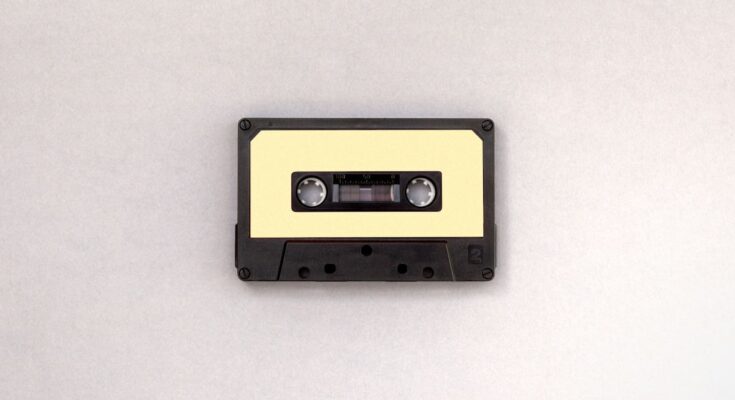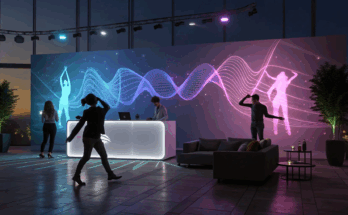With the rise of synthpop and new wave, the 1980s saw a dramatic change in the pop music scene. The use of synthesizers and electronic sounds, or synthpop, gave the music industry a futuristic and avant-garde edge. At the forefront of this movement were bands like Depeche Mode, New Order, and The Human League, whose catchy, danceable songs connected with a generation excited about fresh, exciting music. Synthpop’s throbbing beats and contagious melodies quickly became well-known, taking over radio stations and nightclub scenes all over the world. On the other hand, new wave was a broad genre that combined pop, punk, and electronic elements.
Key Takeaways
- Synthpop and New Wave in the 80s brought electronic sounds and catchy melodies to the forefront of pop music.
- Hip-Hop and R&B in the 90s revolutionized pop music with their unique beats and soulful vocals, influencing the genre for years to come.
- Boy bands and girl groups dominated the late 90s and early 2000s, creating a pop culture phenomenon with their catchy tunes and synchronized dance moves.
- The Pop-Punk and Emo Movement in the 2000s brought a raw and emotional edge to pop music, resonating with a new generation of fans.
- The 2010s saw the emergence of EDM and Electronic Pop, revolutionizing the genre with their infectious beats and electronic production.
By incorporating oddball lyrics, unorthodox song structures, & a rebellious spirit into their music, musicians like Blondie, The Cars, and Talking Heads significantly influenced the sound of new wave. A defining sound of the 1980s, the genre’s eclectic and boundary-pushing nature appealed to a wide range of listeners. Pop music history was irrevocably altered by both synthpop and new wave, which not only shaped the decade’s music but also cleared the path for a number of subsequent subgenres and genres.
As synthpop and new wave rose to prominence, it was clear that the 1980s were a decade of pop music experimentation and innovation. Artists were able to produce sounds that were previously unthinkable with the use of synthesizers and electronic instruments. This development in technology, along with a rising interest in unusual and avant-garde music, paved the way for a revolution in music that would influence subsequent decades. Modern pop music is still influenced by synthpop and new wave, as musicians are still motivated by the audacious and daring nature of these avant-garde subgenres.
An New Era’s Arrival. Hip-hop, a genre of music firmly rooted in African American culture, introduced an unadulterated & unfiltered energy to the forefront of mainstream music. A generation of young people seeking self-expression and authenticity connected with this genre, which is marked by its catchy beats and meaningful lyrics. Hip-hop pioneers. performers such as The Notorious B.
and Tupac Shakur. I. G. and Nas were some of the hip-hop genre’s early pioneers, telling tales of adversity, hope, and resiliency through their music.
Their songs addressed issues like social injustice, racism, & poverty while creating vivid portraits of inner-city life. Something New in RandB Sound. Another hugely popular genre in the 1990s was R&B, which saw a major change during this time. Pop, rock, and hip-hop elements were incorporated into R&B by artists such as Whitney Houston, Boyz II Men, and Mariah Carey, pushing the genre’s boundaries and creating a new, more modern sound.
Conversely, R&B combined elements of funk, blues, and gospel to create a smooth, soulful sound that influenced pop music. With their poignant ballads and catchy grooves, artists like Mariah Carey, Boyz II Men, and TLC dominated the charts, demonstrating the emotional depth and melodic richness of the genre. Beyond just music, R&B influenced dance, fashion, and popular culture in general.
R&B had its heyday in the 1990s when musicians stretched boundaries and reinvented the genre, paving the way for future developments. One cannot emphasize how much of an influence R&B and hip-hop had on pop music in the 1990s. Along with changing the musical landscape, these subgenres questioned social mores and spurred crucial discussions about representation, race, and identity. Pop music of today bears the influence of hip-hop and R&B, whose inventive sounds & fearless storytelling continue to inspire artists.
Pop music history saw a sea change in the 1990s when R&B and hip-hop became influential genres that would go on to dominate the genre going forward. In popular music, boy bands and girl groups dominated the late 90s and early 2000s. These performers won over millions of hearts with their upbeat music, coordinated dance routines, & positive image. Boy bands like *NSYNC, 98 Degrees, and Backstreet Boys rose to fame around the world by selling out arenas and topping charts with their catchy pop anthems.
They became idols to a generation of fans drawn to their charm and relatable lyrics by their captivating performances and harmonious vocals. During this period, girl groups also had a big influence on pop music. Acts like TLC, Spice Girls, and Destiny’s Child saw enormous success. These bands’ fearless demeanors, ferocious attitudes, and catchy songs that embraced individuality & self-expression empowered women. Their impact went beyond music, influencing fashion and igniting a fresh movement in popular culture that supported female empowerment. With their lasting impact on pop music history, boy bands and girl groups came to be associated with the late 90s and early 2000s.
Global audiences were enthralled with the cultural phenomenon of boy bands & girl groups ruling the late 90s and early 2000s. Their catchy tunes, endearing performances, & relatable lyrics drew in fans regardless of age, gender, or nationality. Pop music today is still influenced by these acts, as new artists keep redefining the genre and paying homage to their influence while also introducing it to new audiences. The 2000s saw the emergence of pop-punk and emo as significant pop music movements.
A vibrant and rebellious vibe was introduced to mainstream music by pop-punk acts like Sum 41, Blink-182, & Green Day. A generation of fans were captivated by their unabashed attitude and punk rock ethos, which were reflected in their catchy hooks, anthemic choruses, and relatable lyrics. Growing into a phenomenon, pop-punk influenced youth culture, popular music overall, and fashion trends. On the other side, emo became a subgenre of punk rock that emphasized introspective lyrics & emotional expression.
Bands like My Chemical Romance, Fall Out Boy, and Panic! At The Disco became well-known due to their theatrical performances, unique aesthetic, and candid songwriting. Fans were moved by the raw vulnerability and intense passion of Emo, who found comfort in its poignant storytelling and cathartic melodies. Fashion, art, and youth subculture were all impacted by the genre, which had an impact beyond music. Pop music began to move toward more reflective and emotionally charged sounds in the 2000s with the emergence of the pop-punk and emo movements.
For a generation struggling with identity, mental health concerns, & social pressures, these genres offered a voice. Current pop music is still influenced by pop-punk and emo, as musicians continue to push boundaries and redefine the genre for a new era by taking inspiration from their unabashed spirit and emotional honesty. The Electronic Dance Music Boom. EDM music gained popularity thanks to the contributions of artists like Calvin Harris, Avicii, and David Guetta, who created upbeat beats, memorable melodies, & an energizing vibe.
With their catchy songs that merged pop and dance music, their thrilling performances enthralled audiences all over the world & ruled festivals, clubs, and radio stations. The Rise of Electronic Pop. In the 2010s, electronic pop became increasingly popular, driven by the likes of Lady Gaga, Katy Perry, and The Chainsmokers. These performers combined electronic elements with their pop sensibilities to create a sound that was both radio-friendly and avant-garde.
Electronic pop rose to prominence as a byword for chart-topping singles, avant-garde production methods, & visually stunning content that completely changed the pop music landscape. A Durable Heritage. One cannot stress the influence that electronic pop and EDM had on pop music in the 2010s. These genres altered not just the soundscape but also the way that listeners experienced live concerts, listened to music, and interacted with musicians.
Artists are constantly pushing boundaries and reinventing pop music for a new era, taking inspiration from the innovative production and contagious energy of electronic dance music (EDM) & electronic pop. The 2010s were a watershed in the history of pop music as it altered the way artists interacted with their fans through social media. Through personal insights into their creative process, behind-the-scenes moments, and even answering fan comments, artists were able to interact directly with their audience on platforms such as YouTube, Instagram, and Twitter. The relationship between artists and fans became closer than ever as a result of this direct communication. In addition, social media gave up-and-coming musicians a way to independently display their abilities without depending on radio play or traditional record labels.
Some artists, like Shawn Mendes, used Vine to gain popularity before breaking through to mainstream success, while Justin Bieber and other artists were discovered through YouTube before signing record deals. In addition, social media has impacted how music is consumed by fans by igniting viral dances or challenges that have helped songs like “In My Feelings” by Drake and “Old Town Road” by Lil Nas X reach the top of the charts. As a result, there has been a surge in artistic collaborations that have resulted in unforeseen but fruitful alliances between artists who have connected through social media platforms. It’s obvious that technology will keep having a significant influence on how we listen to music as we consider what the future of pop music holds. Expect more immersive live performance and interactive content experiences from our favorite artists as virtual reality (VR) technology advances.
Also, it is anticipated that artificial intelligence (AI) will become more prevalent in the music-making process. AI will do this by evaluating streaming platform data to forecast trends or even produce original music inspired by well-liked sounds or styles. As artists continue to push boundaries by fusing elements from different genres—such as hip-hop with rock or electronic dance music with traditional folk sounds—we can anticipate more fusion between different styles. Lastly, as artists utilize their platform to promote eco-friendly practices or bring attention to environmental issues during tours or events, we can anticipate seeing a greater emphasis on sustainability within the industry. In summary, pop music will undoubtedly continue to develop as it has always done, embracing new technologies while adhering to its fundamental principles of artistic expression and global audience connection.
If you’re interested in exploring the evolution of pop music, you might also enjoy reading about the tropical music extravaganza by European DJ duo Copamore. Their unique blend of exotic beats and catchy melodies is sure to captivate any music lover. Check out the article here for a taste of their infectious sound.
FAQs
What are the key characteristics of 80s pop music?
In the 1980s, pop music was characterized by the use of synthesizers, electronic drums, and catchy melodies. The music often featured a polished and glossy production style, and the lyrics often focused on themes of love, relationships, and partying.
How did pop music evolve from the 80s to today?
Pop music has evolved significantly since the 80s, with changes in production techniques, musical styles, and lyrical themes. In the 90s, pop music saw the rise of boy bands and girl groups, while the 2000s saw the influence of hip-hop and R&B. Today, pop music continues to incorporate elements of electronic dance music, hip-hop, and indie pop.
What are some notable trends in pop music today?
Some notable trends in pop music today include the use of electronic production techniques, the blending of different musical genres, and the rise of streaming platforms as a dominant way of consuming music. Additionally, there is a focus on visual aesthetics and branding, with artists using social media and music videos to connect with their audience.
How has technology impacted the evolution of pop music?
Technology has had a significant impact on the evolution of pop music, particularly with the advent of digital recording and production tools. This has allowed for greater experimentation with sound and has democratized the music-making process, enabling artists to create and distribute their music more easily.
What are some influential artists and albums from the evolution of pop music?
Some influential artists and albums from the evolution of pop music include Michael Jackson’s “Thriller” from the 80s, Madonna’s “Like a Prayer” from the 90s, Britney Spears’ “…Baby One More Time” from the 2000s, and Taylor Swift’s “1989” from the 2010s. These artists and albums have had a significant impact on shaping the sound and direction of pop music.



